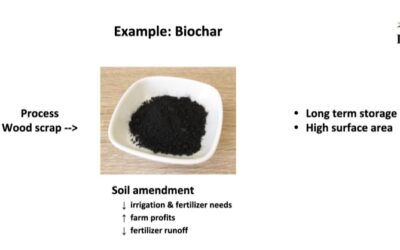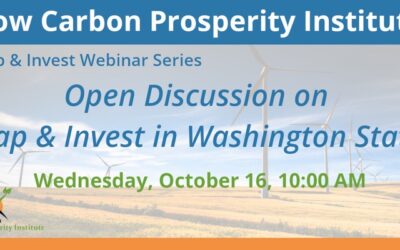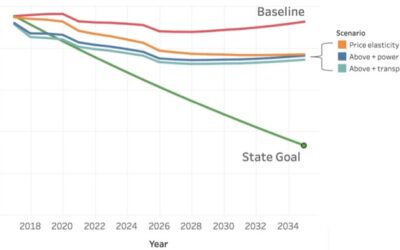All Stories
Slides from the 2nd Annual Future of Carbon Policy Forum
2nd Annual Future of Carbon Policy Forum Thursday, December 12, 2019, 4-6:00 PMMercer Island Community & Event Center Pathways to Clean EnergyEileen Quigley, Executive Director, Clean Energy Transition Institute [pdf-embedder...
BioSequestration Policy Pathways
BioSequestration Policy Pathways
A policy research and evaluation effort led by:
The Clean & Prosperous Institute
Our Operating Framework
Climate change is real, caused mostly by combusting fossil fuels
It’s a crisis –
Risk to our health, way of life, and economy
IPCC: we only have 10 years to cut net emissions in half.
The severity of the crisis depends on the net of:
+ Ongoing GHGs emissions
– Atmospheric GHGs absorbed and stored on the planet (“sequestration”)
Bio-sequestration can
play a major role in meeting our net reductions
~30% of gross emissions are being offset by naturally occurring biosequestration
Create a stable and growing financial boon for Rural America – “farming carbon”
Webinar Q&A: Banking of Excess Carbon Permits
CaPI Webinar Series: Cap & Invest in Washington StateWebinar Q&A: Introduction to Cap & Invest in Washington StateIs banking of allowances incompatible with the objective to reduce emissions? Is banking of excess carbon permits a necessary and fundamental...
Webinar Q&A: RGGI GHG reduction
CaPI Webinar Series: Cap & Invest in Washington StateWebinar Q&A: Introduction to Cap & Invest in Washington StateIs it true that RGGI GHG reduction stalled during the Great Recession because need for energy declined and there was no political will to...
Webinar Q&A: California’s Cap & Trade Program
CaPI Webinar Series: Cap & Invest in Washington StateWebinar Q&A: Introduction to Cap & Invest in Washington StateIs it true that California’s Cap & Trade program does not address transportation emissions?Shorter Answer False. Transportation emissions can...
Webinar Q&A: Is Cap and Trade better than a Carbon Fee?
CaPI Webinar Series: Cap & Invest in Washington StateWebinar Q&A: Introduction to Cap & Invest in Washington StateWhy is a cap approach better than a carbon fee, especially an accelerating fee? Corollary Questions: Do you believe cap & invest is the best...
Webinar: 100% Clean Power: What it Means for Business
This webinar covers the emerging details of the House and Senate 100% greenhouse gas free power policies, and presents findings from our own modeling of the anticipated carbon reduction and cost impacts from these policies taking effect. Important distinctions between different utilities are explored. We also reviewed a recently introduced proposal to link with other states in establishing an economy wide GHG Cap.
Analysis of 100% Clean Bill (SB 5116) Cost Cap
This updated Clean & Prosperous Institute (CaPI) analysis examines the rate impacts of eliminating coal power, achieving an 80% clean energy standard by the year 2030, and a 100% clean energy standard by the year 2045. CaPI relies on a variety of sources, and deploys its own utility-specific model.
UPDATED: Effect on GHG Emissions and Rates from 100% Clean Power
This updated Clean & Prosperous Institute (CaPI) analysis examines the rate impacts of eliminating coal power, achieving an 80% clean energy standard by the year 2030, and a 100% clean energy standard by the year 2045. CaPI relies on a variety of sources, and deploys its own utility-specific model.






